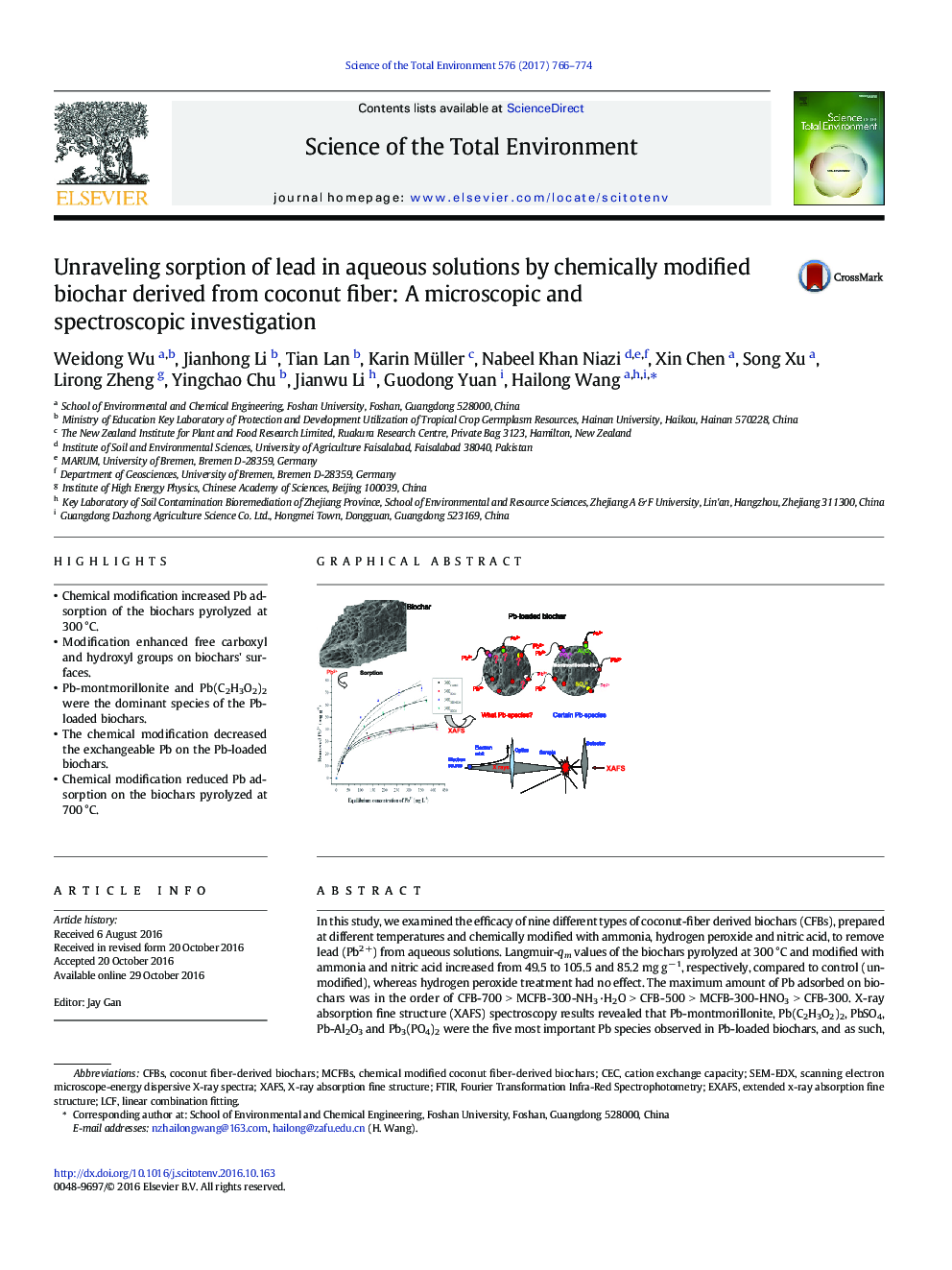| Article ID | Journal | Published Year | Pages | File Type |
|---|---|---|---|---|
| 5752017 | Science of The Total Environment | 2017 | 9 Pages |
â¢Chemical modification increased Pb adsorption of the biochars pyrolyzed at 300 °C.â¢Modification enhanced free carboxyl and hydroxyl groups on biochars' surfaces.â¢Pb-montmorillonite and Pb(C2H3O2)2 were the dominant species of the Pb-loaded biochars.â¢The chemical modification decreased the exchangeable Pb on the Pb-loaded biochars.â¢Chemical modification reduced Pb adsorption on the biochars pyrolyzed at 700 °C.
In this study, we examined the efficacy of nine different types of coconut-fiber derived biochars (CFBs), prepared at different temperatures and chemically modified with ammonia, hydrogen peroxide and nitric acid, to remove lead (Pb2 +) from aqueous solutions. Langmuir-qm values of the biochars pyrolyzed at 300 °C and modified with ammonia and nitric acid increased from 49.5 to 105.5 and 85.2 mg gâ 1, respectively, compared to control (unmodified), whereas hydrogen peroxide treatment had no effect. The maximum amount of Pb adsorbed on biochars was in the order of CFB-700 > MCFB-300-NH3·H2O > CFB-500 > MCFB-300-HNO3 > CFB-300. X-ray absorption fine structure (XAFS) spectroscopy results revealed that Pb-montmorillonite, Pb(C2H3O2)2, PbSO4, Pb-Al2O3 and Pb3(PO4)2 were the five most important Pb species observed in Pb-loaded biochars, and as such, favoring Pb immobilization in aqueous solutions. Overall, the sorption capacity of CFBs pyrolyzed at 300 °C substantially increased for Pb2 + with ammonia and nitric acid modification. However, these chemical modifications did not improve the sorption of Pb on CFBs pyrolyzed at temperatures â¥Â 500 °C, thereby highlighting a temperature dependent response of chemically modified biochars to Pb sorption in this study.
Graphical abstractDownload high-res image (250KB)Download full-size image
